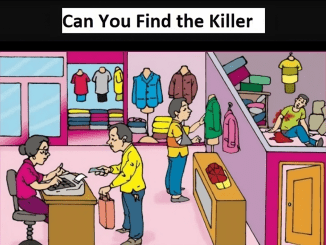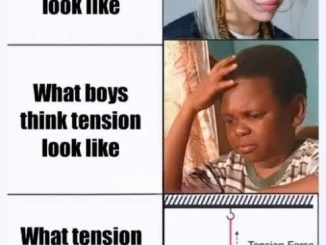For centuries, life and death were seen as the ultimate opposites. Life marked the presence of vital functions, while death signified their end. But recent scientific discoveries challenge this age-old dichotomy. Researchers have uncovered a mysterious “third state” that exists beyond traditional definitions of life and death, where cells from dead organisms reorganize into new, functional forms. This fascinating development has the potential to revolutionize biology and medicine. Let’s explore the details of this groundbreaking phenomenon.
Life and Death: No Longer Opposites?

The traditional view of life and death as polar opposites is starting to fade. Scientists now suggest that life and death may be part of a continuum, with a unique “third state” lying somewhere in between. In this third state, certain cells continue to function and even gain new abilities after the organism has died.
This revelation shakes the foundations of biology and raises profound questions. Can cells really “live” after death? And if so, how do they continue to function? Recent studies show that this third state exists due to cellular mechanisms that allow cells to reorganize, survive, and even perform unexpected tasks after the organism dies.
A New Form of Multicellular Life Emerges
One of the most astounding discoveries within this third state is the emergence of new multicellular life forms from cells of dead organisms. Scientists observed that cells could survive, reassemble, and take on new forms after the organism’s death. These cells can even form structures capable of performing functions not possible during the organism’s life.
The transformation of these cells introduces a state beyond the realms of life and death. Researchers have noticed that under the right conditions, cells from deceased organisms can not only continue living but also self-assemble into entirely new structures with unique behaviors. This discovery holds enormous potential for medicine and cellular biology.
Frog Skin Cells and the Birth of Xenobots
In a remarkable demonstration of the third state, scientists at the University of Vermont observed skin cells from dead frog embryos forming living machines, called xenobots. These xenobots exhibited self-assembly behavior, organizing themselves into new, functional entities. Unlike in a living frog, these cells demonstrated abilities to move around and navigate their environment by using tiny, hair-like cilia.
Xenobots represent a new form of living machine. They are autonomous, meaning they don’t rely on external control, and showcase the incredible adaptability of cells—even after the organism they came from has died. The potential applications of xenobots span from environmental cleanup to precision medicine, where they could one day deliver drugs within the human body.
Self-Replication Without Growth: A New Type of Reproduction
In addition to their mobility, xenobots display a fascinating ability to self-replicate in a way that differs from traditional life forms. They replicate through a process known as kinematic self-replication, where they copy their structure without the need for growth or division. This behavior defies traditional biological rules, which dictate that living organisms must grow to reproduce.
The implications of kinematic self-replication could be groundbreaking for various fields, including bioengineering and regenerative medicine. If harnessed correctly, it could lead to new technologies that allow for self-healing materials or biological structures that repair themselves without external intervention.
Human Lung Cells Transform into Anthrobots

It’s not just frog cells that exhibit this mysterious third state. Human lung cells have also shown the ability to reorganize and become what scientists call “anthrobots.” These anthrobots are microscopic, multicellular structures capable of movement and self-healing. Astonishingly, they can even repair damaged neurons, hinting at potential treatments for neurological diseases in the future.
Anthrobots offer a glimpse into the potential medical applications of this third state. Imagine a world where anthrobots could deliver targeted treatments to repair damaged tissue or organs. By exploiting the unique properties of these post-mortem cells, scientists could develop therapies that bypass traditional medical limitations.
Bioelectricity and Cellular Communication: The Key to the Third State
One theory behind this third state involves bioelectricity—the electrical signals generated by cell membranes. Researchers believe that bioelectricity allows cells to communicate and reorganize even after the organism’s death. This form of cellular communication could explain how cells adapt and take on new roles in the absence of traditional life processes.

Bioelectricity might be the bridge between life, death, and this third state. By understanding and harnessing these electrical signals, scientists could unlock new ways to control cellular behavior, possibly creating new forms of treatment that interact directly with cellular bioelectric networks.
Implications for Regenerative Medicine and Beyond
The discovery of a third state is not just a scientific curiosity—it holds significant promise for medical applications. One of the most exciting possibilities is in the field of regenerative medicine. Scientists believe that anthrobots and xenobots could be used in therapies to deliver drugs, clear arterial plaque, or dissolve mucus in conditions like cystic fibrosis. Because these structures naturally degrade within weeks, they offer a safe, controlled solution for medical interventions.
Furthermore, this research could redefine legal definitions of death, as cells continue to function postmortem. The potential to revive or use cells from deceased individuals to benefit the living could usher in a new era of biomedical ethics and applications.
A Built-In “Kill Switch” for Safety

Despite the incredible potential of xenobots and anthrobots, safety concerns remain paramount. Luckily, these post-mortem multicellular organisms have a natural “kill switch.” They tend to degrade within four to six weeks, preventing them from growing uncontrollably or becoming invasive. This built-in lifespan ensures that they can perform their functions safely without posing long-term risks.
This degradation also means that xenobots and anthrobots could be ideal for temporary applications, such as delivering targeted therapies or performing environmental cleanup tasks. Once their job is done, they simply break down and disappear, leaving no trace behind.
Conclusion: A New Frontier in Biology and Medicine

The discovery of a third state of existence beyond life and death has opened up a new frontier in biology. The emergence of xenobots and anthrobots challenges our fundamental understanding of cellular behavior, redefining what it means to be “alive.” As scientists continue to explore this remarkable phenomenon, we may see revolutionary advancements in regenerative medicine, bioengineering, and even our legal definitions of life and death.
This third state invites us to reconsider the boundaries of life and explore how we can harness the properties of post-mortem cells to transform medicine and technology. With each discovery, we move closer to a future where life, death, and everything in between can be used to benefit humanity in ways we never thought possible. The journey is just beginning, and the possibilities are endless.


